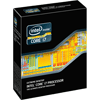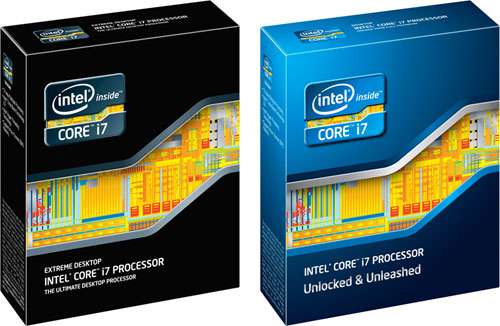- Qualcomm Launches Snapdragon 4 Gen 2 Mobile Platform
- AMD Launches Ryzen PRO 7000 Series Mobile & Desktop Platform
- Intel Launches Sleek Single-Slot Arc Pro A60 Workstation Graphics Card
- NVIDIA Announces Latest Ada Lovelace Additions: GeForce RTX 4060 Ti & RTX 4060
- Maxon Redshift With AMD Radeon GPU Rendering Support Now Available
Intel Core i7-3960X Extreme Edition Review

To those looking to build the biggest, baddest high-end PC around, the wait for Sandy Bridge-E was no doubt painful. But, it’s finally here, and much to our expectations, Intel has once again solidified its position as the performance leader. So let’s take a look at what it offers, and compare it to the i7-990X, i7-2600K and AMD FX-8150.
Page 14 – Final Thoughts
As was proven many times throughout this article, Intel has once again delivered the world’s fastest desktop processor with its Core i7-3960X Extreme Edition. This of course comes as no surprise, as it’s based on what we already knew to be the most efficient CPU architecture to date, but has added cores, a bigger cache and a quad-channel memory controller.
In all truly multi-threaded tests, the Core i7-3960X often blew the i7-2600K out of the water, and where architecture improvements played a role, the i7-990X simply seemed non-impressive in comparison.
We’re currently working on refining our methods for establishing proper power draw numbers and temperatures, so we didn’t have those for this article. However, in our testing we found that the i7-3960X idled as low as the i7-2600K – around 100~110W at idle. During an AIDA64 stress-test, we saw it load at around 260W, which is in all regards impressive given that we’re dealing with the fastest processor on the planet.
But fast it might be, it’s hard to ignore the fact that the i7-3960X, as seen in the block diagram on the second page of this review has two cores lobbed off and inaccessible. Many were hoping that Sandy Bridge-E would launch with eight cores, but alas it didn’t. As mentioned on the same page, there are good reasons why Intel chose to do this, but that doesn’t make it any less unfortunate.
It’s been reported that we will see eight-core variants by mid-2012, but whether those will be priced the same as the current top-end Sandy Bridge-E, we’re not sure. Intel usually treats the $999 price-point as a limit, but it’s been broken through before.
Complicating this a bit further, the second launch processor, the i7-3930K, is so comparable to the i7-3960X that it’d make little sense to go for the $990 option unless there is a specific need. The only differences between the two processors is 100MHz on the clock speed and 3MB dropped off for cache. As a result of those simple changes, the price difference is $435. Unless you specifically need as much cache as possible, there’s no justifiable reason to choose the i7-3960X over the i7-3930K. Both are completely unlocked and ready to be overclocked to your heart’s content.
That said, given the minor differences between the two launch CPU models, the i7-3930K becomes a great choice when looking to build as high-end of a PC as possible without going to the “Extreme”. Compared to the i7-2700K in heavily multi-threaded scenarios, there will just be no comparison. For the price of one i7-3960X, you can pick up the i7-3930K, an X79 motherboard and 16GB of RAM – a base to one heck of a drool-worthy machine.
On the topic of cost, the X79 platform has shaped up to be one of the most expensive to date – but that’s not a hit against it. When you’re buying a Sandy Bridge-E processor, you’re buying into a true workstation platform. With its quad-channel memory controller, you’re able to install up to eight DIMMs on most motherboards, and as we saw earlier, the bandwidth numbers are simply unparalleled.
Motherboards-wise, you’re not going to find a good offering for under $300, so much like the X58 launch, the processor isn’t the only expensive proposition. Fortunately though, most of the available motherboards are the most robust and feature-packed we’ve ever seen – many of them we will be reviewing for you over the course of the next couple of weeks.
Overall, it goes without saying that Sandy Bridge-E is an impressive platform. Intel took all that there was to love with Sandy Bridge, tweaked the architecture, gave us more Cache and tossed in a couple of cores. All of this combined gives us new processors that are actually worthy of being excited about. It’s hard to not picture the eight-core models rumored to be released in the next six months or so, but such is life. As it is, Intel once again has given us the fastest, most capable platform around. If that’s what you’ve been looking for – look no further.
Discuss this article in our forums!
Have a comment you wish to make on this article? Recommendations? Criticism? Feel free to head over to our related thread and put your words to our virtual paper! There is no requirement to register in order to respond to these threads, but it sure doesn’t hurt!
Support our efforts! With ad revenue at an all-time low for written websites, we're relying more than ever on reader support to help us continue putting so much effort into this type of content. You can support us by becoming a Patron, or by using our Amazon shopping affiliate links listed through our articles. Thanks for your support!






